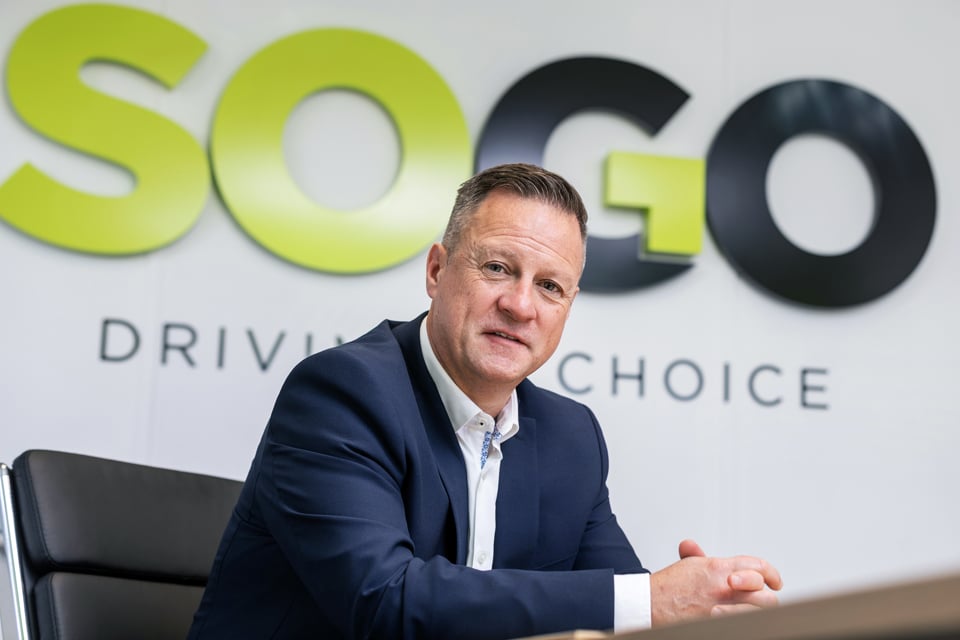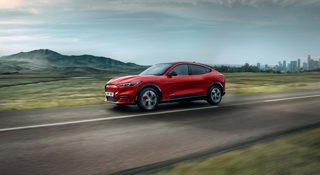By Karl Howkins, managing director of Sogo mobility
After lengthy discussions, Germany struck a deal with the EU to allow the sale of combustion engine vehicles that run on e-fuels beyond 2035. It’s a pragmatic approach that recognises the difficulties of moving an economy to purely battery electric vehicle (BEV) mobility in a little over a decade.
It may be anti-dogmatic in the UK, but our daily conversations with businesses across the country suggest that management teams would like a little more pragmatism here.
To date, the adoption of BEVs by the fleet sector has been nothing short of miraculous.
The appeal of tax incentives to company car drivers, excellent driving dynamics and lower running costs to fleet managers drove demand well ahead of supply.
However, the shock of the energy crisis put the brakes on demand for BEVs as drivers were reluctant to add to their bills at home, and public charging costs soared.
Add to the cost calculation to increases in funding fleet vehicles and falling residual values, and BEVs aren’t as attractive as they were three years ago.
While still keen to expand the number of BEVs on their fleets, companies are tempering the pace of adoption. It’s a pattern repeated across companies of varying sizes and locations.
For context, Sogo is a company dedicated to driving the transition to net zero, and electric vehicles (EVs) account for around 28% of our fleet.
But, for any change to be sustainable, it must be economically viable. For companies making decisions about their fleets, we see greater demand for a mix of vehicles between internal combustion engine (ICE) and BEVs.
The Government has several levers to pull to manage the transition to net zero. The tax incentives based around BIK should be maintained and not increase over the next decade. It is a powerful incentive for the average company car driver.
The US government is kicking off its plan to spend billions of dollars building out hundreds of thousands of public electric vehicle chargers across America. And while the infrastructure continues to advance in the UK, there is a clear demand from drivers to increase the pace of development.
Joe Biden has made a strong push for the use of EVs as part of his proposal to address climate change. The president stated that by 2030, he hoped that 50% of all vehicle sales in the United States would be electric.
Meanwhile, in California, the CC4A programme provides up to $9,500 towards a down payment for an electric vehicle if the applicant returns a car older than a 2005 model, and CVRP provides a $4,500 subsidy on new electric vehicles to income-qualified applicants.
The UK has scrapped its plug-in car grants, while 21 other European governments offer grants of up to €9,000 to EV customers. If registrations of BEVs are plateauing, it is clear that action must be taken to kick-start growth.
The Government can also introduce further regulations and policies to support EV adoption. These can include stricter emission standards for new vehicles, zero-emission or low-emission zones in urban areas and mandates for public sector fleets to transition to electric vehicles.
There also needs to be a public awareness campaign to counteract the rising tide of anti-BEV nonsense. Headlines have ranged from car parks that are set to collapse from the weight of BEVs to misinformation about the lifespan of battery packs. A campaign should highlight the availability of charging infrastructure and the cost savings associated with EV ownership.
Collaboration between the Government and the fleet industry is essential, alongside charging infrastructure providers and energy companies. Working together, challenges can be addressed collectively, and supportive policies implemented.
Too often, the debate over green mobility becomes binary when it is likely the solution will be a blend of advanced technologies ranging from BEV to hybrid, hydrogen and e-fuels.
Sogo has taken the decision to remain flexible and open to all changes in powertrains.
Whatever the outcome, a successful business model will be based on meeting customer needs by supplying the right cars for the task at a price that makes business sense.
It’s clear that there is a long road ahead for the industry to meet the ICE ban by 2035. It would serve business owners and the wider economy to give ourselves some breathing room and push the date back five years or widen the scope of vehicles to include hybrids.



















Login to comment
Comments
No comments have been made yet.